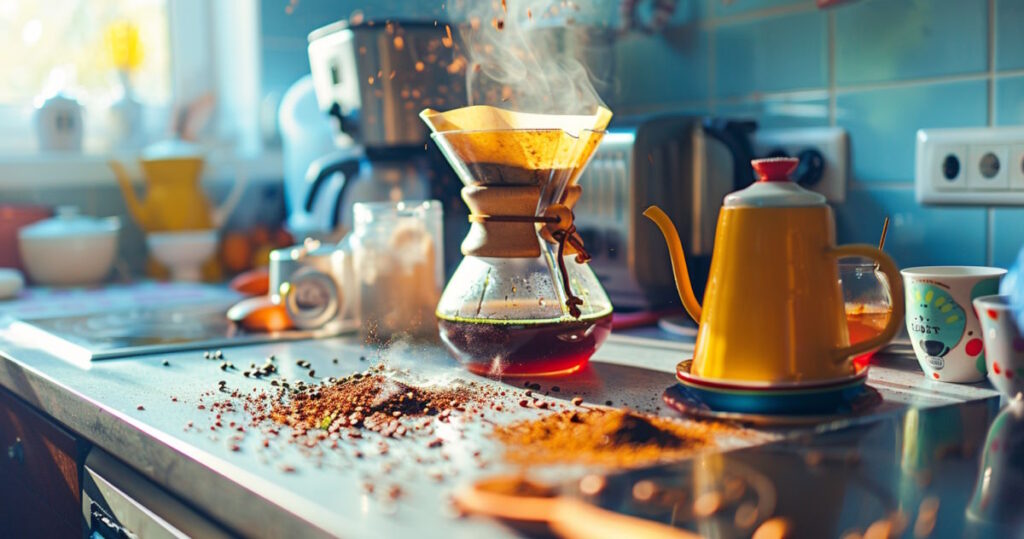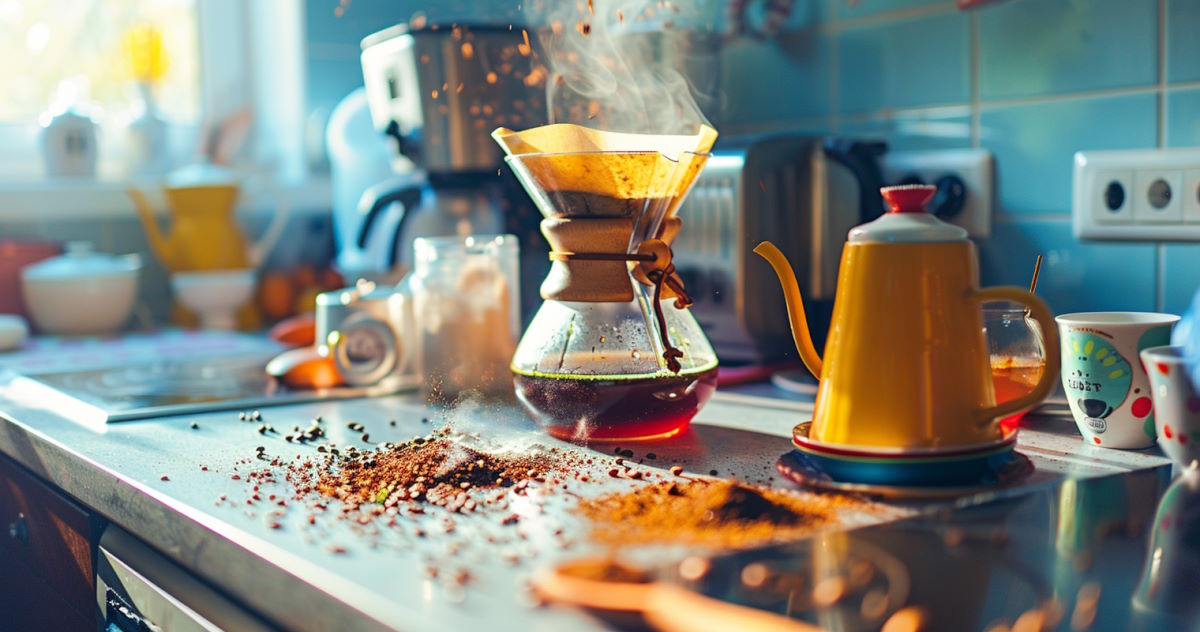
We’ve all been there. You’re craving that perfect cup of coffee, but instead, you’re sipping something that resembles dishwater or rocket fuel. And just like that, your morning goes from “ready to conquer the world” to “I need a redo.” But fear not, fellow caffeine lovers, for the key to coffee bliss is often hidden in the small details we tend to overlook.
From dodgy grind sizes to the wrong water temperature, we’ve compiled a list of common coffee brewing mistakes – and how to avoid them. Say goodbye to subpar brews and hello to café-worthy cups at home. Let’s dive into the world of coffee fixes!
Grinding Your Beans Too Fine or Too Coarse
Your coffee grinder may seem harmless, but it could be your worst enemy if not handled correctly. A grind too fine might leave you with a bitter sludge, while a coarse grind could result in watery disappointment.
The fix? Experiment with your grind size. Think of it as tuning a guitar – too tight (fine), and the strings snap, too loose (coarse), and it sounds flat. The trick is finding the sweet spot for your brewing method. For your French press, think chunky sea salt; for espresso, fine like table sugar.
Using Tap Water Without a Second Thought
Ah, tap water. Easy, convenient, but also the reason your coffee may taste like a warm glass of disappointment. The minerals and impurities in untreated water can mess with your coffee’s flavour in ways you didn’t even realize.
For the best results, use filtered water. Not to go all posh on you, but the fewer impurities in your water, the more your coffee can shine. If you wouldn’t drink the water plain, it’s probably not good enough for your coffee either. Simple swap, better brew!
Ignoring Your Coffee Maker’s Cleanliness
Let’s be honest: when was the last time you cleaned your coffee maker? If your answer involves counting in months, this one’s for you. Over time, oils and grime build up, turning your once-perfect machine into a flavour saboteur.
A regular cleaning ritual can save your coffee from tasting like an odd mix of old socks and burnt toast. A simple rinse with vinegar or a specialised cleaner can work wonders. Your taste buds will thank you!
Overloading Your Coffee with Grounds
More coffee grounds mean more caffeine, right? Well, not exactly. While it’s tempting to add an extra scoop (or five), too many grounds can lead to an over-extracted, bitter brew that’s more punishment than pleasure.
Stick to the golden ratio: roughly two tablespoons of coffee per six ounces of water. Too much of a good thing can definitely spoil the magic. Balance is key, just like with biscuits and tea.
Not Paying Attention to the Water Temperature
Boiling water straight from the kettle into your grounds is a no-go, my friend. Too hot, and you’ll scorch the beans, too cool, and you won’t extract those lovely flavours you’re after.
Let the water cool down to around 90-96°C. No thermometer? No worries. Let your kettle sit for about 30 seconds after boiling, and you’re in the perfect zone. It’s like making a cup of tea – not too hot, not too cold, but just right.
Using Pre-Ground Coffee for Too Long
We get it – pre-ground coffee is convenient. But if it’s been sitting in your cupboard since last Christmas, it’s time for a change. Coffee starts losing its freshness about 15 minutes after being ground, so imagine what weeks (or months) will do!
Invest in whole beans and grind just before brewing. It’s an easy upgrade, and trust us, you’ll taste the difference. Fresh is best, as any baker or barista will tell you.
Rushing the Brewing Process
In our fast-paced world, patience is a virtue – especially when it comes to brewing coffee. If you’re rushing through the process, you’re bound to end up with a lacklustre cup that’s more flat than flavourful.
Take your time and follow the recommended brew times. Whether it’s a pour-over or a French press, giving your coffee the attention it deserves will pay off in every sip. After all, good things come to those who wait – especially coffee.
Neglecting to Measure Your Coffee and Water
Eyeballing the coffee-to-water ratio may feel like a time-saving hack, but it often leads to inconsistent results. One day you’ll get a perfect brew, and the next, it’ll taste like you’re drinking brown-colored water.
Grab a kitchen scale or measuring spoon, and take the guesswork out of it. You wouldn’t bake a cake without measuring the ingredients, so why do it with your coffee? Consistency is key to repeatable coffee perfection.
Letting Your Coffee Sit for Too Long
We’ve all been guilty of making a pot of coffee and letting it sit there for hours, slowly turning into a bitter, stale mess. Coffee doesn’t age like fine wine – once brewed, it’s on borrowed time.
Enjoy your coffee fresh and avoid letting it sit for more than 30 minutes. If you must have it later, pop it in an insulated thermos to keep it warm without ruining the flavour. It’s the closest thing to a time machine for your coffee.
Using the Wrong Equipment for the Job
Not all brewing methods are created equal. Using the wrong equipment for your preferred brew style is like trying to eat soup with a fork – it just doesn’t work.
Whether it’s a French press, espresso machine, or AeroPress, make sure you’ve got the right gear for the job. It’s a small investment for big coffee rewards. Think of it as your coffee toolkit, designed to save your mornings.
Conclusion
Got any other coffee mishaps you’ve run into? Share your coffee fails (and wins) with us on our Facebook page! And don’t forget to follow our page for more tips, tricks, and coffee love. Let’s brew better together!

